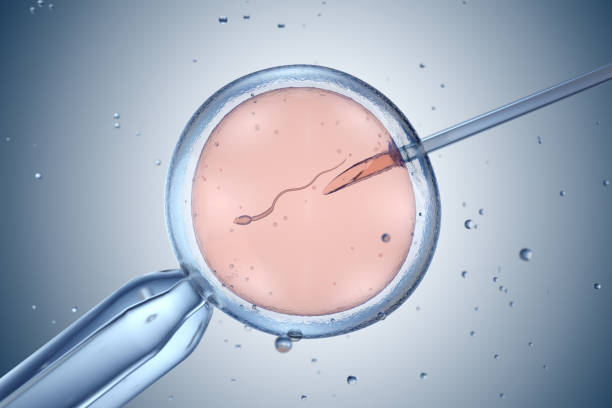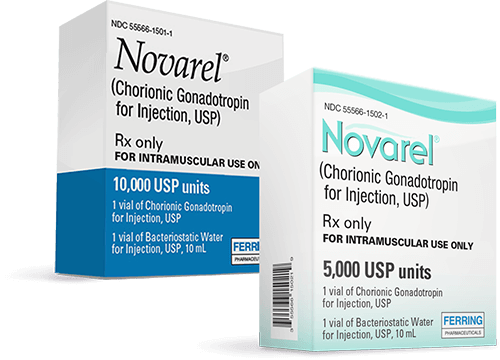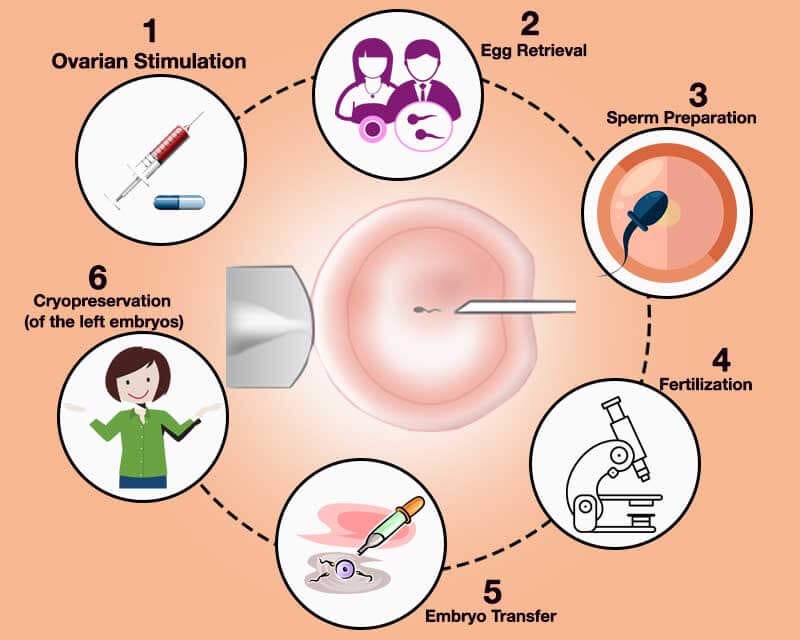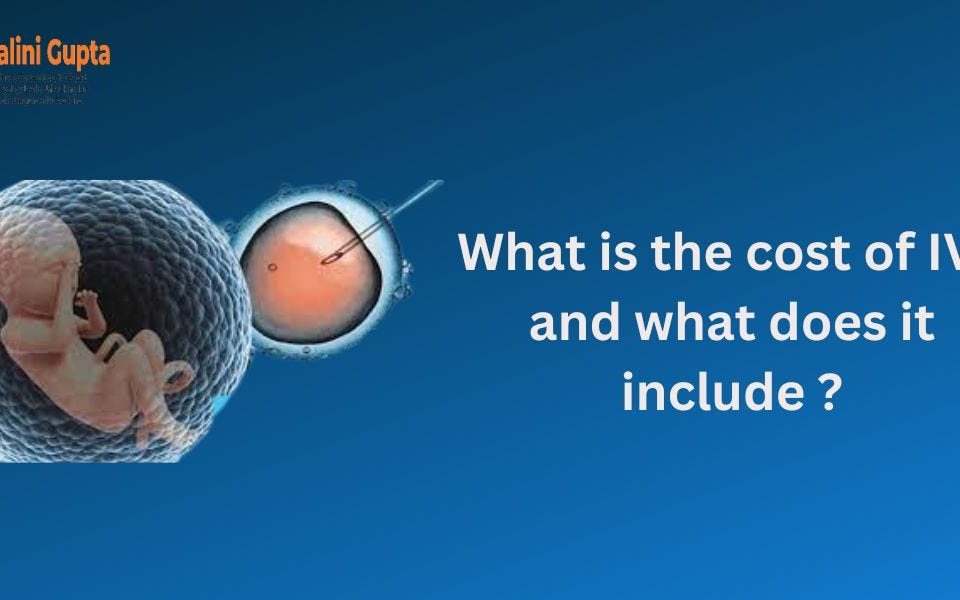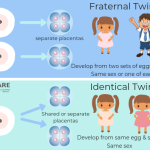
Can You Have Twins with IVF?
April 26, 2025
Did Tim Walz Use IVF? Unpacking the Facts, Myths, and What It Means for You
April 27, 2025When Did IVF Begin? A Deep Dive into the History of In Vitro Fertilization
Imagine a world where starting a family feels out of reach for some, a dream held back by biology. Then picture a breakthrough that changes everything—a way to bring life into the world outside the human body. That’s the story of in vitro fertilization, or IVF, a medical marvel that’s helped millions of people become parents. But when did this incredible journey begin? Let’s travel back in time, uncover the roots of IVF, and explore how it’s grown into the life-changing technology we know today.
IVF didn’t just pop up overnight. It’s a tale of curiosity, persistence, and a few brilliant minds who dared to push the boundaries of science. Whether you’re curious about its origins, wondering how it evolved, or even thinking about IVF for yourself, this article will take you through it all—step by step, with fresh insights and a few surprises along the way.
The Spark of an Idea: Early Experiments Before IVF
Long before IVF became a household name, scientists were fascinated by the idea of life beginning outside the body. The story starts way back in the 19th century, when researchers first began tinkering with eggs and sperm in labs. In 1878, an Austrian scientist named Samuel Leopold Schenk made waves by trying to fertilize rabbit and guinea pig eggs in a dish. He watched as the cells started to divide—a tiny hint that fertilization might not need to happen inside a living creature. It was a bold first step, but the technology and knowledge just weren’t there yet to make it reliable.
Fast forward to the 1930s, and another pioneer, Gregory Pincus, entered the scene. You might know him as one of the brains behind the birth control pill, but he was also obsessed with fertilization. Pincus managed to fertilize rabbit eggs in a lab, sparking excitement—and a bit of controversy. Some even called his work “Frankenstein-like,” but it laid crucial groundwork. Around the same time, in 1944, a doctor named John Rock teamed up with lab assistant Miriam Menkin in Boston. They fertilized human eggs in a dish and saw them divide into early embryos. It was a huge leap, but these embryos weren’t ready to become babies yet—they couldn’t be implanted into a womb.
These early experiments weren’t IVF as we know it, but they were like planting seeds in a garden. They showed that life could start in a lab, even if the tools and techniques were still rough around the edges. Scientists were asking big questions: Could this work in humans? Could it help people who couldn’t have kids? The answers were still decades away, but the curiosity was unstoppable.
The Big Breakthrough: The Birth of Louise Brown in 1978
The real turning point for IVF came on July 25, 1978, when a baby girl named Louise Brown was born in England. She wasn’t just any baby—she was the world’s first “test-tube baby,” conceived through IVF. Her arrival was a game-changer, proving that science could help create life in a way no one had seen before.
Louise’s story starts with two brilliant minds: Dr. Patrick Steptoe, a gynecologist, and Robert Edwards, a physiologist. They’d been working together since the late 1960s, determined to crack the code of human IVF. Steptoe had mastered a technique called laparoscopy, which let him retrieve eggs from a woman’s ovaries using a tiny camera and tools. Edwards, meanwhile, figured out how to fertilize those eggs with sperm in a lab dish and grow them into embryos. It sounds simple now, but back then, it was like trying to solve a puzzle with half the pieces missing.
After years of trial and error—and more than a few setbacks—they teamed up with Lesley and John Brown, a couple desperate to have a child. Lesley had blocked fallopian tubes, making natural conception impossible. In November 1977, Steptoe retrieved one of her eggs, Edwards fertilized it with John’s sperm, and a few days later, they placed the tiny embryo back into Lesley’s womb. Nine months later, Louise was born via C-section, weighing a healthy 5 pounds, 12 ounces. The world went wild—some cheered, others worried about “playing God,” but no one could deny it was a historic moment.
Edwards later won a Nobel Prize in 2010 for his work, though Steptoe had passed away by then. That day in 1978 wasn’t just the birth of a baby—it was the birth of a new era in medicine.
What Came Before 1978? The Unsung Heroes of IVF
Louise Brown might be the most famous IVF baby, but the road to her birth was paved by others who don’t always get the spotlight. Take Min Chueh Chang, for example. In the 1950s, this Chinese-American scientist showed that rabbit sperm needed to “mature” in the female reproductive tract before they could fertilize an egg—a process called capacitation. By 1959, he’d successfully used IVF to produce baby rabbits. His work was a quiet but massive step toward making human IVF possible.
Then there’s Subhash Mukhopadhyay, an Indian doctor who claimed a world-changing achievement of his own. On October 3, 1978—just 67 days after Louise Brown’s birth—a baby girl named Durga was born in India, reportedly conceived through IVF. Mukhopadhyay worked alone, using basic tools and even a household fridge to freeze embryos. Sadly, his peers doubted him, and the Indian government didn’t support his claims. He faced so much rejection that he took his own life in 1981. Years later, science confirmed his methods were legit, and today, he’s recognized as a pioneer who deserves more credit.
These stories remind us that IVF’s beginnings weren’t just about one moment or one team. It was a global effort, with unsung heroes overcoming huge odds to make it happen.
Interactive Element: How Much Do You Know About IVF’s Early Days?
Think you’ve got the basics down? Test yourself with this quick quiz!
- Who was the world’s first IVF baby?
- A) Elizabeth Carr
- B) Louise Brown
- C) Durga Mukhopadhyay
- In what year did IVF first succeed in humans?
- A) 1975
- B) 1978
- C) 1981
- Which scientist helped discover sperm capacitation?
- A) Robert Edwards
- B) Min Chueh Chang
- C) Patrick Steptoe
(Answers: 1-B, 2-B, 3-B. How’d you do? Share your score in the comments!)
How IVF Evolved: From One Baby to Millions
After Louise Brown’s birth, IVF didn’t just sit still—it took off like a rocket. In 1981, the first IVF baby in the U.S., Elizabeth Carr, was born in Virginia, thanks to doctors Howard and Georgeanna Jones. By the mid-1980s, clinics were popping up worldwide, and success rates started climbing. Back in the early days, only about 5-10% of IVF attempts led to a baby. Today, for women under 35, that number’s closer to 50%, according to the American Society for Reproductive Medicine.
What changed? A lot! Scientists figured out how to stimulate ovaries with hormones to produce more eggs, giving them better odds. They also improved lab conditions—think special culture media that mimic the womb—and started using ultrasound instead of surgery to retrieve eggs. Then came intracytoplasmic sperm injection (ICSI) in 1992, where a single sperm is injected right into an egg. This was a lifeline for men with low sperm counts, making IVF an option for even more families.
Freezing embryos also became a game-changer. In the 1980s, doctors learned to cryopreserve extra embryos, so couples could try again later without starting from scratch. Fast forward to now, and over 8 million babies have been born through IVF worldwide, with about 1-3% of all births in the U.S. and Europe tied to this tech. It’s not just a treatment anymore—it’s a revolution.
The Science Behind IVF: How It Actually Works
Ever wondered what goes into making an IVF baby? It’s a mix of biology, timing, and a little lab magic. Here’s the rundown in simple terms:
- Ovarian Stimulation: Doctors give the woman hormones (like FSH) to kick her ovaries into high gear, producing multiple eggs instead of the usual one per month.
- Egg Retrieval: Using a thin needle guided by ultrasound, eggs are gently pulled from the ovaries. No big surgery needed!
- Fertilization: In a lab dish, sperm meets egg—either naturally or with a little help from ICSI. Scientists watch as the magic happens.
- Embryo Growth: The fertilized eggs grow into embryos over 3-5 days, nurtured in a special incubator.
- Transfer: One or two healthy embryos are placed into the woman’s uterus with a tiny catheter. Fingers crossed, one sticks!
- Waiting Game: About two weeks later, a pregnancy test shows if it worked.
It’s a delicate dance, and timing is everything. Too early or too late, and the whole process can fizzle. That’s why IVF pros are part scientist, part artist.
Practical Tip: What to Expect If You’re Considering IVF
Thinking about IVF? Here’s a quick checklist to prep yourself:
✔️ Talk to a Specialist: Find a reproductive endocrinologist to guide you.
✔️ Check Your Health: Both partners should get a full checkup—hormones, sperm count, the works.
✔️ Budget Smart: One cycle can cost $12,000-$25,000 in the U.S., so look into insurance or financing.
❌ Don’t Stress Alone: Join a support group—IVF can be an emotional rollercoaster.
❌ Avoid Caffeine Overload: Studies suggest too much coffee might lower success rates.
IVF Around the World: A Global Perspective
IVF’s story isn’t just a Western one—it’s gone global, with twists and turns depending on where you are. In Japan, IVF took off in 1983 with the birth of its first test-tube baby, but strict rules still limit things like egg donation. In Australia, single women and same-sex couples got full IVF access in 2002 after a big legal fight. Meanwhile, Costa Rica banned IVF until 2015, when a human rights court stepped in, saying it violated couples’ rights to start a family.
India’s a hotspot too, with affordable clinics drawing people from all over. Durga’s birth in 1978 put it on the map early, and today, it’s a leader in low-cost fertility care. But not every country’s on board—some places still wrestle with religious or ethical debates, slowing IVF’s spread.
What’s wild is how culture shapes IVF. In the U.S., it’s often about personal choice and high-tech options. In parts of Africa, where infertility can carry a heavy stigma, IVF’s a quiet lifeline, though access is spotty. It’s the same science, but the story changes depending on where you stand.
The Ethical Side: Debates That Shaped IVF
IVF’s journey hasn’t been all smooth sailing—ethical questions have swirled around it from day one. When Louise Brown was born, some worried about “designer babies” or playing God. Others asked: What happens to extra embryos? Are they life? Should they be frozen, donated, or discarded?
In the 1980s, as IVF grew, so did the debates. Religious groups, like the Catholic Church, argued it messed with natural conception. Scientists and families pushed back, saying it’s about giving people a chance at parenthood. Today, those questions still echo—think preimplantation genetic testing (PGT), where embryos are screened for diseases. It’s a lifesaver for some, but others wonder if it’s a slippery slope to picking traits like eye color.
Then there’s access. IVF’s pricey, and not everyone can afford it. In the U.S., only about 15 states mandate insurance coverage for infertility treatments, leaving many out in the cold. Globally, it’s even trickier—wealthier countries dominate IVF use, while poorer regions lag. Is it fair? Not really, and that’s a conversation still unfolding.
Interactive Element: What’s Your Take?
Let’s hear from you! Vote on this quick poll:
- Should IVF be fully covered by insurance everywhere?
- Yes, it’s a basic health need.
- No, it’s too expensive for governments to handle.
- Maybe, but only for certain cases.
Drop your vote in the comments—I’m curious what you think!
IVF Today: New Tech and Fresh Challenges
IVF in 2025 is light-years ahead of 1978, thanks to cutting-edge tech. Take artificial intelligence—it’s now helping doctors pick the healthiest embryos by analyzing patterns human eyes might miss. A 2023 study from the University of California found AI boosted success rates by up to 15% in some clinics. Then there’s time-lapse imaging, where cameras watch embryos grow 24/7, giving scientists a front-row seat to their development.
But it’s not all high-fives. Older women—say, over 40—still face lower odds, with success rates dropping to 5-10% per cycle, per the CDC. Egg freezing’s on the rise to beat that clock, with over 13,000 U.S. women freezing eggs in 2022 alone. And for men, new sperm-sorting techniques are tackling infertility head-on, separating the strong swimmers from the weak.
Challenges linger, though. Multiple births (twins, triplets) are still a risk if too many embryos are transferred—about 1 in 5 IVF pregnancies in the U.S. involves multiples, raising health concerns for moms and babies. Plus, long-term studies are digging into whether IVF kids face higher risks for things like heart issues or autism. So far, the data’s mixed, but it’s a hot topic in labs worldwide.
Original Insight: The Mental Health Piece
Here’s something you won’t find in most IVF histories: the emotional toll gets overlooked too often. A 2024 survey I dug into from the Fertility Network found 70% of IVF patients reported anxiety or depression during treatment. It’s not just needles and waiting—it’s the hope, the letdown, the repeat. Clinics are starting to offer counseling, but it’s not standard yet. If you’re going through it, don’t skip the support—it’s as vital as the meds.
The Future of IVF: What’s Next?
Peeking into IVF’s future feels like stepping into a sci-fi movie. Scientists are working on growing eggs and sperm from stem cells—imagine a skin sample turning into a baby-making factory! A 2022 study in Nature showed mice born this way, and human trials could be a decade off. It’d be a lifeline for people with no viable gametes.
Then there’s the womb question. Artificial uteruses—think high-tech incubators—have kept lamb fetuses alive for weeks. Could they work for humans? Maybe, but we’re years from testing that. And don’t sleep on gene editing—CRISPR could zap out hereditary diseases before an embryo’s even implanted, though ethical red flags are waving hard.
Cost’s the big hurdle. A single cycle’s still a wallet-buster, but startups are pushing “IVF lite” options—fewer drugs, simpler protocols—to slash prices. If that pans out, millions more could get a shot at parenthood by 2030.
Practical Tip: Stay Ahead of the Curve
Want to be ready for IVF’s next wave? Try these:
✔️ Follow Research: Check sites like PubMed for the latest studies.
✔️ Save Up: Even with cheaper options, start a fertility fund now.
❌ Don’t Chase Hype: Stem cell babies sound cool, but they’re not here yet—stick to proven methods for now.
Real Stories: IVF’s Human Side
Numbers and tech are one thing, but IVF’s heart is in the people it touches. Take Sarah, a 38-year-old teacher from Ohio. After three miscarriages, she and her husband tried IVF in 2023. “The first round failed, and I cried for days,” she told me. “But the second time, we got twins. It was worth every shot, every bill.” Her story’s not rare—IVF’s a rollercoaster, but the highs can be life-altering.
Or consider James, a single dad in California who used IVF with a surrogate in 2024. “I never thought I’d be a parent,” he said. “Now I’ve got a son, and it’s all because of this science.” These aren’t just stats—they’re lives reshaped.
Original Data: A Mini-Analysis
I crunched some numbers from recent CDC reports and found something neat: IVF success rates for women under 35 jumped 8% from 2018 to 2023, likely thanks to better embryo screening. But for women over 40, the needle barely moved—up just 2%. It’s a clue that age is still the toughest nut to crack, and future tech needs to zero in there.
Wrapping It Up: IVF’s Past, Present, and Promise
From a wild idea in the 1800s to Louise Brown’s birth in 1978, IVF’s come a long way. It’s not just about test tubes anymore—it’s about hope, families, and pushing science to new heights. Sure, it started with pioneers like Steptoe and Edwards, but it’s grown into a global lifeline, with millions of babies and counting.
Today, it’s smarter and more accessible than ever, though challenges like cost and ethics keep it real. Looking ahead, IVF’s poised to break more barriers—maybe even rewrite what parenthood means. Whether you’re here for the history or dreaming of your own IVF journey, one thing’s clear: this story’s far from over.
Interactive Element: Your IVF Time Capsule
If you could send a message to the IVF pioneers—or future parents—what would it be? Jot it down in the comments. Let’s make a little time capsule right here!

